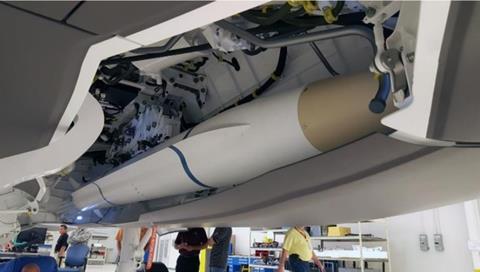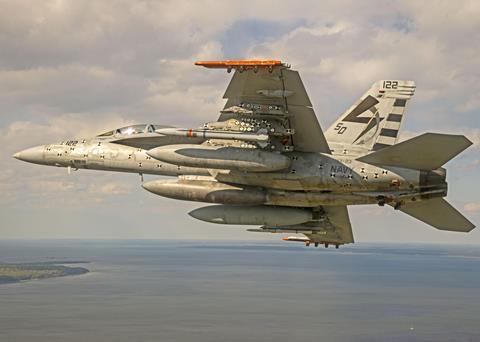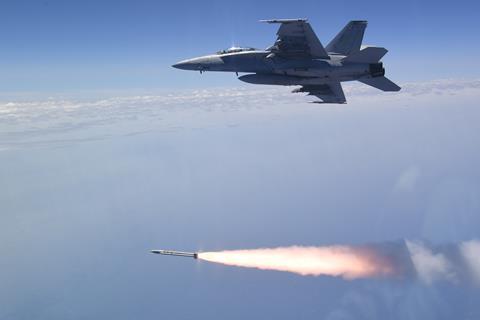US fighter manufacturer Lockheed Martin is officially launching an effort to integrate the Pentagon’s latest air defence suppression missile with Lockheed’s advanced F-35 stealth fighter.
Lockheed on 12 January received a Pentagon contract valued at more than $97 million dollars to fund early development work on integrating the Northrop Grumman AGM-88G Advanced Anti-Radiation Guided Missile – Extended Range (AARGM-ER) with the fifth-generation F-35.
The effort has been alluded to by Northrop and the Pentagon for several years.
The AGM-88G is the US military’s latest anti-radiation missile – a precision guided munition designed to detect the electromagnetic radiation emitted by air defence radars and destroy those assets.

An earlier version of the Northrop-made missile with lesser range, known as the AGM-88E Advanced Anti-Radiation Guided Missile, is also in service. However, that type was previously determined to be incompatible with the internal weapons bays that help maintain the F-35’s stealthy profile.
The 12 January deal with Lockheed will cover AGM-88G integration for all three variants of the F-35 operated by the USA, in addition to F-35 and AARGM-ER foreign military sales customers.
The US Air Force (USAF), US Navy (USN) and US Marine Corps, Australia, Canada, UK, Norway, Italy, the Netherlands and Denmark are specifically mentioned in the contract announcement.
Northrop’s AARGM and AARGM-ER are based on the earlier AGM-88 High Speed Anti-Radiation Missile (HARM), originally developed by Raytheon and first fielded with the US Air Force in 1984.
The munition has seen contemporary combat service in Ukraine, where Kyiv’s Soviet-origin RAC MiG-29 fighters have been adapted to fire the Western missile.

Senior leaders in the USAF say the ability to destroy enemy air defence infrastructure will be a critical capability in any modern, high-intensity conflict.
However, the US military’s premier strike fighter aircraft – the F-35 – is not currently certificated to carry and deploy the most-capable munition for that mission.
The USN has been working to integrate the AARGM-ER with its Boeing F/A-18 Super Hornet and EA-18G Growler carrier-based fighters since at least 2021. That effort has produced multiple successful test fires.

While the USAF has contracted with Northrop to develop a brand new air-to-surface missile known as the Stand-in Attack Weapon, the Pentagon expects that effort to take at least three years. Certifying the existing AARGM-ER with the F-35A will give allied air and naval forces greater options for the suppression of enemy air defence mission.
While fourth-generation fighters such as the Lockheed F-16 can carry anti-radiation missiles such as the AGM-88 HARM, sorties against modern air defences by non-stealth aircraft are high-risk.
Stealth fighters like the F-35 are more likely to survive against – and destroy – such defences, opening a path for fighters and bombers with a larger radar signature to enter enemy air space.
Lockheed did not immediately provide additional details regarding the expected timeline for AGM-88G integration with the F-35.


























